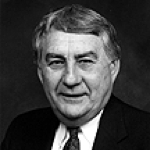All that I think or write or teach or wonder or learn about the management of cultural organizations connects back to Dr. E. Arthur “Al” Prieve. Not only was he my first professor of Arts Administration, he was my on-going reference for how things connect. He passed away last Wednesday. But his lessons continue.
 In 1991, when I first met him, he sketched out the course list for the master’s degree I had come to the University of Wisconsin-Madison from Boston to learn about. On a yellow legal pad, with a number 2 pencil, he wrote the course names for the curriculum he developed — marketing, financial accounting, statistics, organizational behavior, ethics, seminar, and so on. And as he wrote the words, he connected them with a winding narrative, describing how one course influenced the other, and how each element of arts administration comprised a coherent whole.
In 1991, when I first met him, he sketched out the course list for the master’s degree I had come to the University of Wisconsin-Madison from Boston to learn about. On a yellow legal pad, with a number 2 pencil, he wrote the course names for the curriculum he developed — marketing, financial accounting, statistics, organizational behavior, ethics, seminar, and so on. And as he wrote the words, he connected them with a winding narrative, describing how one course influenced the other, and how each element of arts administration comprised a coherent whole.
In 20 minutes, 23 years ago, he shared a roadmap for cultural management that I’m still exploring today.
I would have some version of the same experience with him over and over during our decades of connections. Things I saw as pieces, he would frame as connected. People I thought of as individuals, he would describe as family. Even as his memory faltered later in life, he could recall and recount the entire careers of his former students, as well as their life partners, locations, and personal quirks.
Al Prieve was among the first to frame cultural management as an academic pursuit. In the mid-1960s he drew challenge and inspiration from the launch of the National Endowment for the Arts, the growth of foundation funding and community cultural spending across America, and the need for thoughtful and responsive professionals for the rising tide of arts organizations. Course by course, connection by connection, he defined an entire field and the skills required to serve it. And he developed several generations of arts leaders that contribute to its vitality today.
When Al looked at his students, he also saw more than the sum of their parts. He saw potential and passion, and the roles they might contribute to the larger play. And he was always finding elegant ways to weave them into the plot. Somewhere during my graduate studies, he saw some greater sum in me. And he gave me space and encouragement to grow toward it. He hired me as Assistant Director to the Bolz Center for Arts Administration shortly after I graduated. And he nudged me toward more teaching and writing and thinking and connection with the field, all with his trademark patience, persistence, and grace.
When he retired in 2000, Al championed my appointment as Director. And the network of alumni, practitioners, educators, and insights he had assembled during his decades of generous service made my work a joy. From years of observing him, I knew I could never replace him. But I worked to steward his vision, and to make him proud.
Al Prieve made the world more than the sum of its parts. He was the thread that tied ideas together. He was the keeper and teller of stories that threaded people together. His hand is still now. But his handiwork shimmers on.


Well put, Andrew.
Thanks for continuing the conversation, Andrew.
His way, your way – both so lovely. Your essay reminds me how leadership transfers quietly and by osmosis. Especially for an arts manager, one learns by being nearby. Thank goodness for Al and the powerful people he set in motion.